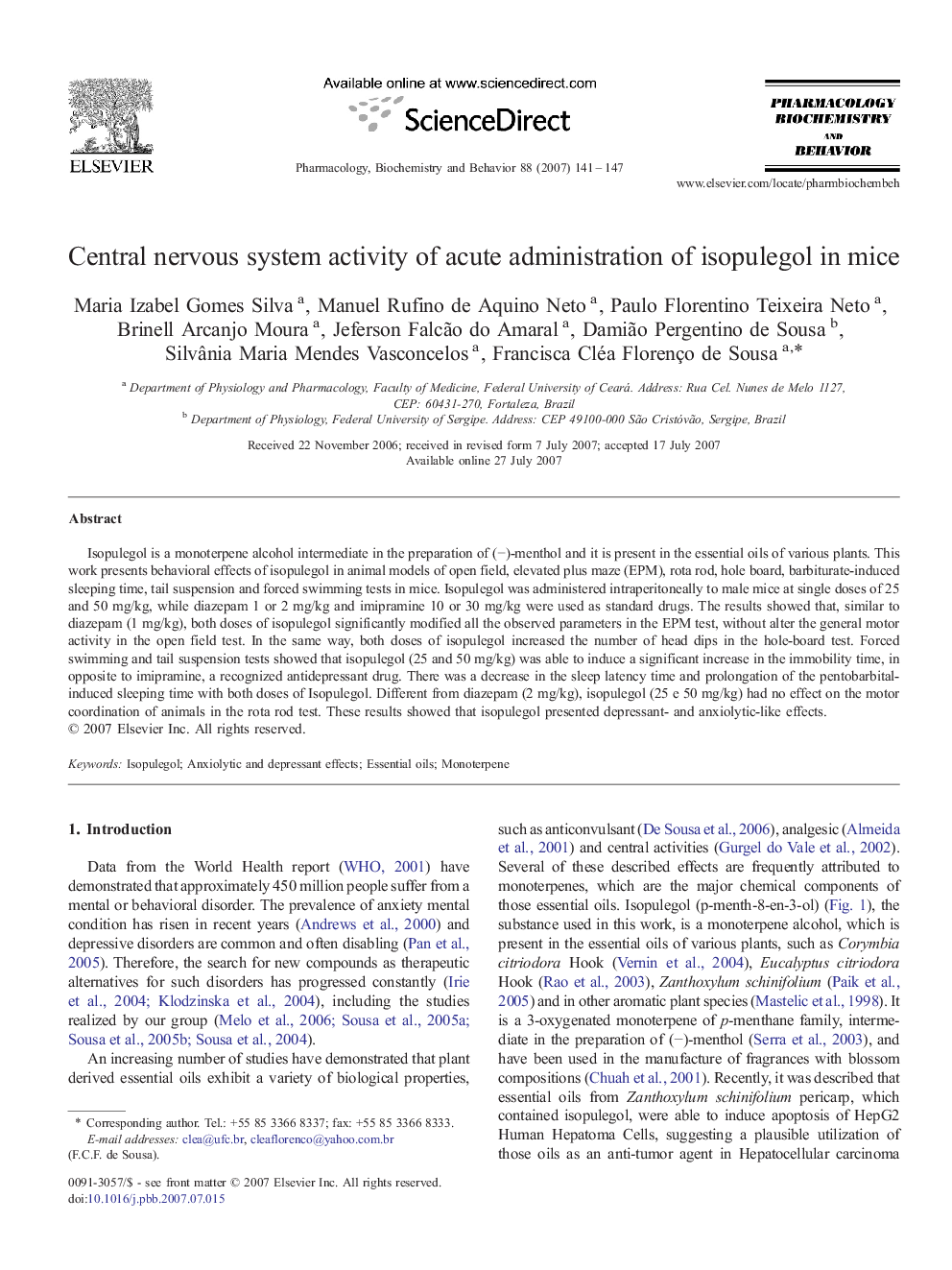| Article ID | Journal | Published Year | Pages | File Type |
|---|---|---|---|---|
| 2014111 | Pharmacology Biochemistry and Behavior | 2007 | 7 Pages |
Abstract
Isopulegol is a monoterpene alcohol intermediate in the preparation of (â)-menthol and it is present in the essential oils of various plants. This work presents behavioral effects of isopulegol in animal models of open field, elevated plus maze (EPM), rota rod, hole board, barbiturate-induced sleeping time, tail suspension and forced swimming tests in mice. Isopulegol was administered intraperitoneally to male mice at single doses of 25 and 50Â mg/kg, while diazepam 1 or 2Â mg/kg and imipramine 10 or 30Â mg/kg were used as standard drugs. The results showed that, similar to diazepam (1Â mg/kg), both doses of isopulegol significantly modified all the observed parameters in the EPM test, without alter the general motor activity in the open field test. In the same way, both doses of isopulegol increased the number of head dips in the hole-board test. Forced swimming and tail suspension tests showed that isopulegol (25 and 50Â mg/kg) was able to induce a significant increase in the immobility time, in opposite to imipramine, a recognized antidepressant drug. There was a decrease in the sleep latency time and prolongation of the pentobarbital-induced sleeping time with both doses of Isopulegol. Different from diazepam (2Â mg/kg), isopulegol (25 e 50Â mg/kg) had no effect on the motor coordination of animals in the rota rod test. These results showed that isopulegol presented depressant- and anxiolytic-like effects.
Keywords
Related Topics
Life Sciences
Biochemistry, Genetics and Molecular Biology
Biochemistry
Authors
Maria Izabel Gomes Silva, Manuel Rufino de Aquino Neto, Paulo Florentino Teixeira Neto, Brinell Arcanjo Moura, Jeferson Falcão do Amaral, Damião Pergentino de Sousa, Silvânia Maria Mendes Vasconcelos, Francisca Cléa Florenço de Sousa,
